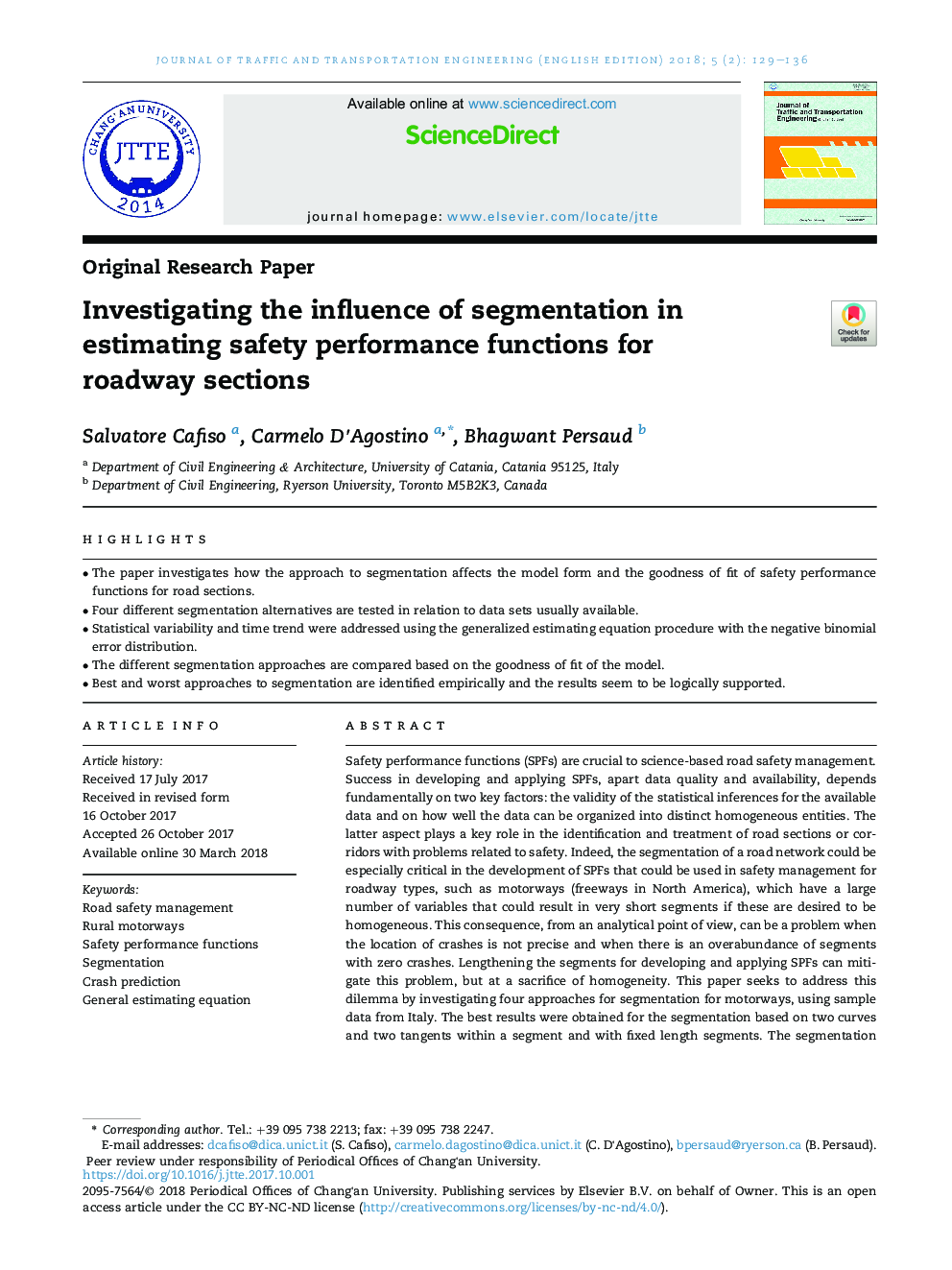| Article ID | Journal | Published Year | Pages | File Type |
|---|---|---|---|---|
| 6756714 | Journal of Traffic and Transportation Engineering (English Edition) | 2018 | 8 Pages |
Abstract
Safety performance functions (SPFs) are crucial to science-based road safety management. Success in developing and applying SPFs, apart data quality and availability, depends fundamentally on two key factors: the validity of the statistical inferences for the available data and on how well the data can be organized into distinct homogeneous entities. The latter aspect plays a key role in the identification and treatment of road sections or corridors with problems related to safety. Indeed, the segmentation of a road network could be especially critical in the development of SPFs that could be used in safety management for roadway types, such as motorways (freeways in North America), which have a large number of variables that could result in very short segments if these are desired to be homogeneous. This consequence, from an analytical point of view, can be a problem when the location of crashes is not precise and when there is an overabundance of segments with zero crashes. Lengthening the segments for developing and applying SPFs can mitigate this problem, but at a sacrifice of homogeneity. This paper seeks to address this dilemma by investigating four approaches for segmentation for motorways, using sample data from Italy. The best results were obtained for the segmentation based on two curves and two tangents within a segment and with fixed length segments. The segmentation characterized by a constant value of all original variables inside each segment was the poorest approach by all measures.
Keywords
Related Topics
Physical Sciences and Engineering
Engineering
Aerospace Engineering
Authors
Salvatore Cafiso, Carmelo D'Agostino, Bhagwant Persaud,
